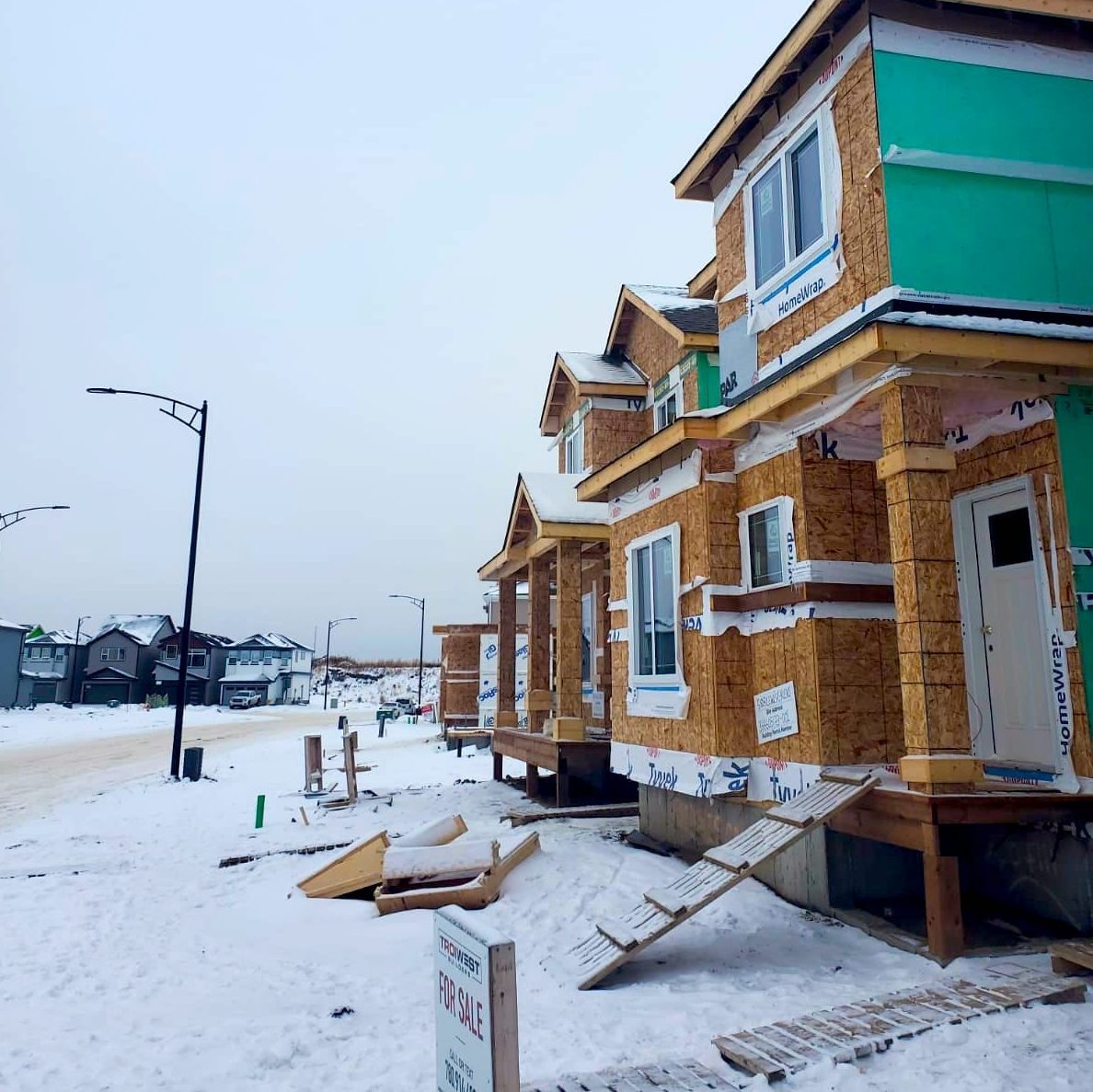A common misperception is that winter home construction is not possible. Technology nowadays, however, permits construction techniques to continue.
The first question that often enters a client’s mind is “How can you pour concrete in winter?” This takes some careful planning as concrete cannot be poured on frozen ground. When air temperature goes below freezing, using electric or gas heaters and insulated tarpaulin enclosures ensures that hydration can continue. Additives are added to the mix to help the concrete set in the cooler conditions and insulation tarps are placed over forms to help properly cure the concrete.

Once the foundation has been poured, few concerns are perceived as difficult. Snow is far less inhibiting than it appears. For example, snow-covered lumber on exposed frames can be wiped down, and even if snow settles on the lumber for a few days, it can be dusted off whereby the moisture evaporates from the wood in the low-humidity winter temperatures. The general practice however, is to let the snow melt once the home is framed in and the windows and doors are installed. Heaters can then be used efficiently to maintain a warm temperature on the inside of the home, from there the heat source can be transferred to the furnace that will eventually be used to heat your home.
Three benefits to Winter construction:
1/ Sooner than Later
If your permit is ready, then beginning is better than waiting. Labour and material costs typically go up in the Spring, so even while certain weather conditions may delay the duration of the project, having the project completed by early spring rather than only started early spring would be preferable. Remember, once a contract is signed, the buyer’s price does not change, so sign it in fall!
2/ Landscaping
If your home is complete in early spring, you can set about starting landscaping through the summer rather than late fall or into winter. It is much easier to envision how you want your landscaping when it isn’t covered in snow.
3/ Lifestyle
If you are moving into a new neighbourhood or city, a move in date for spring/summer is much more conducive to family life where many activities and school commitments begin in the fall.
